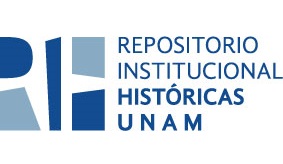Buscar
Mostrando ítems 1-10 de 122
Artículo
La conquête de Mexico-Tenochtitlan dans le Codex Vaticanus A
(2020)
Entre los libros pictográficos amoxtli que expresan en imágenes la conquista de México-Tenochtitlan, el Codex Vaticanus A o Codex Vaticano Ríos es sin duda el códice cuya iconografía es la más rica en detalles. En dos ...
Artículo
Paleografía y traducción del náhuatl al español de los capítulos 3 a 6 del libro VII del Códice Florentino
(Instituto de Investigaciones Históricas, Universidad Nacional Autónoma de México, 2020)
This work presents the paleographic transcription and Spanish translation of chapters 3 to 6 from Book VII of the Florentine Codex, a 16th-century manuscript compiled under the direction of Fray Bernardino de Sahagún. The ...
Artículo
“Siempre peleaban sin razón”. La guerra florida como construcción social indígena
(Instituto de Investigaciones Históricas, Universidad Nacional Autónoma de México, 2020)
This article offers a new interpretation of an indigenous war that the Aztecs called “Flowery War” (xochiyaoyotl). Existing approaches are questioned to propose that the Flowery War corresponds to an Amerindian war model ...
Artículo
Los rostros del español en el náhuatl de ayer y hoy. Entre el mantenimiento, la sustitución y la revitalización lingüística
(Instituto de Investigaciones Históricas, Universidad Nacional Autónoma de México, 2020)
In this paper, various sources written in Nahuatl from both the colonial and contemporary periods are reviewed. By contrasting these sources with their oral history, the aim is to understand the effect of the influence of ...
Artículo
Élodie Dupey García y María Luisa Vázquez de Ágredos Pascual (eds.), Painting the Skin: Pigments on Bodies and Codices in Pre-Columbian Mesoamerica. Tucson: University of Arizona Press, 2
(Instituto de Investigaciones Históricas, Universidad Nacional Autónoma de México, 2020)
The review addresses an interdisciplinary volume on the use of pigments on Mesoamerican bodies and codices, highlighting their sensory, medicinal, and symbolic relations. The book offers new insights into the materiality ...
Artículo
John F. Schwaller, The Fifteenth Month. The Aztec History in the Rituals of Panquetzaliztli. Norman: University of Oklahoma Press, 2019John F. Schwaller, The Fifteenth Month. The Aztec History in the Rituals of Panquetzaliztli
(Instituto de Investigaciones Históricas, Universidad Nacional Autónoma de México, 2020)
Artículo
Vida y muerte en Mesoamérica. Comentarios sobre Guilhem Olivier, Cacería, sacrificio y poder en Mesoamérica. Tras las huellas de Mixcoatl, “Serpiente de Nube”. México: Fondo de Cultura Económica, Universidad Nacional Autónoma de México, Centro de Estudios Mexicanos y Centramericanos, 2015
(Instituto de Investigaciones Históricas, Universidad Nacional Autónoma de México, 2020)
This review examines Guilhem Olivier’s work on Mixcoatl, interweaving themes of hunting, war, sacrifice, and power. The author proposes a complex anthropological vision of Mesoamerican thought through intercultural comparisons.
Artículo
Ce Acatl Topiltzin Quetzalcoatl y su lugar en la sucesión de gobernantes toltecas. Una interpretación a través de la historia colhua
(Instituto de Investigaciones Históricas, Universidad Nacional Autónoma de México, 2020)
One of the main discussions regarding Ce Acatl Topiltzin Quetzalcoatl in Mesoamerican history has focused on the role he played in ruler succession at Tula. Paul Kirchhoff and Wigberto Jiménez Moreno began this historical ...
Artículo
Ehecatl Quetzalcoatl vs. Topiltzin Quetzalcoatl of Tollan: a Problem in Mesoamerican Religion and History
(Instituto de Investigaciones Históricas, Universidad Nacional Autónoma de México, 2020)
This article by Henry B. Nicholson explores the complex relationship between two key figures in Mesoamerican thought: Ehecatl-Quetzalcoatl, the wind deity, and Topiltzin Quetzalcoatl, the legendary ruler of Tollan. Through ...
Artículo
Mesoamerican Mosaics from Early European Collections: Style, Provenance and Provenience
(Instituto de Investigaciones Históricas, Universidad Nacional Autónoma de México, 2020)












